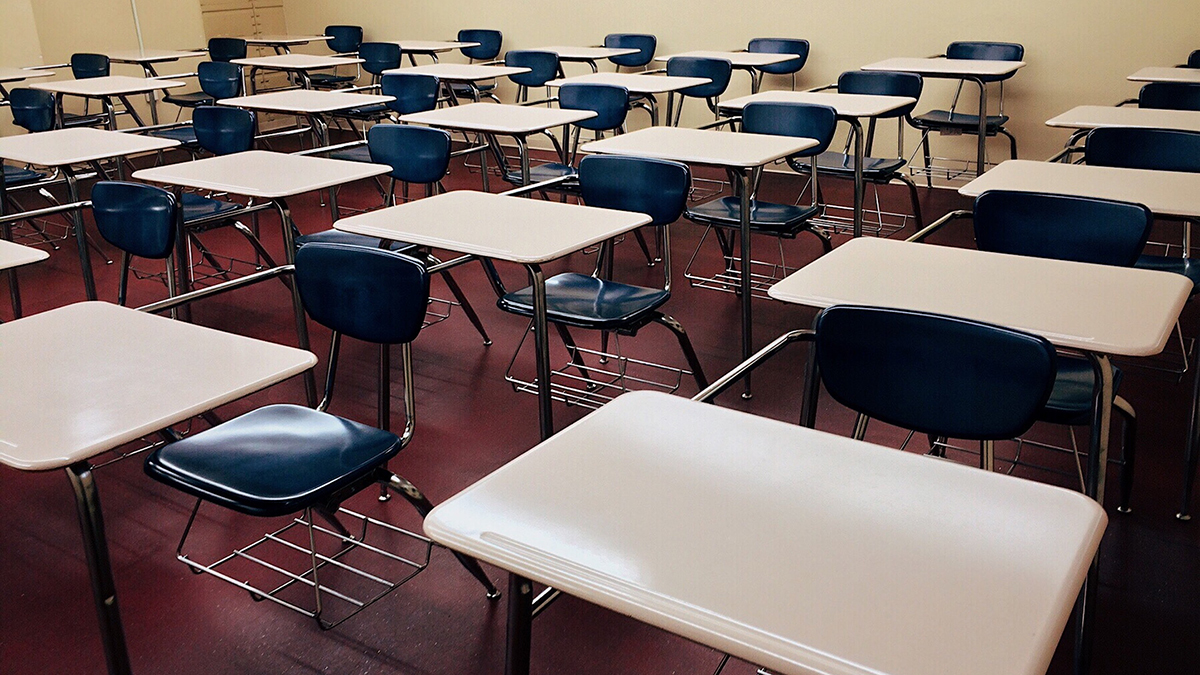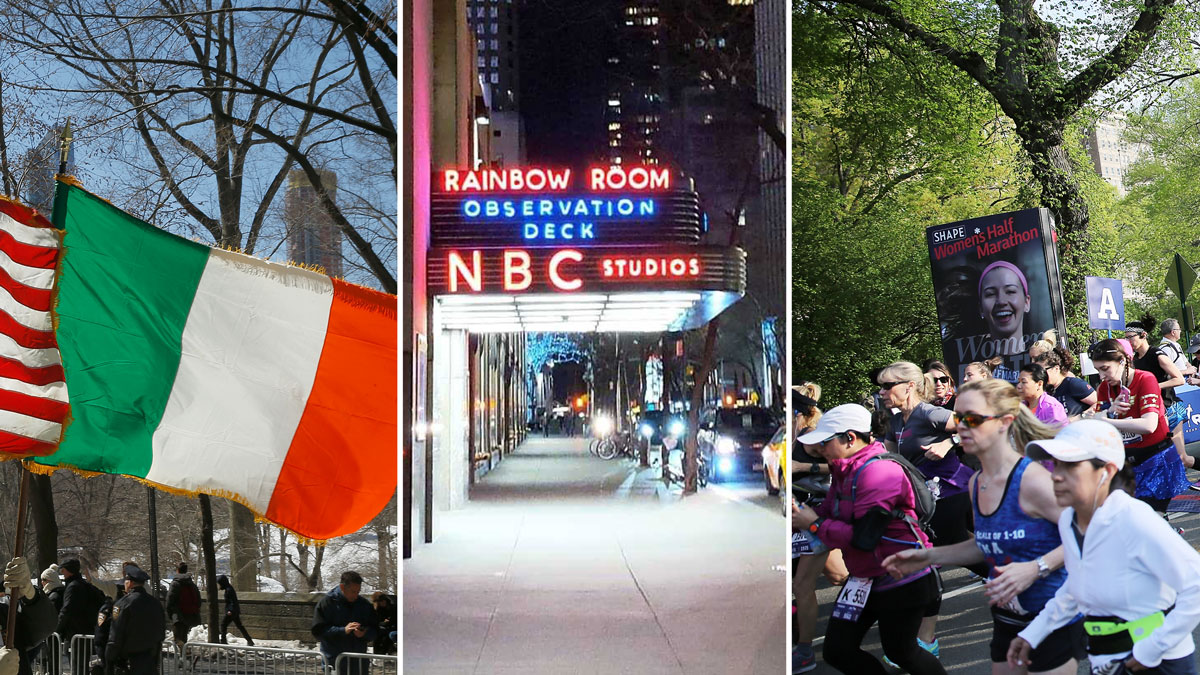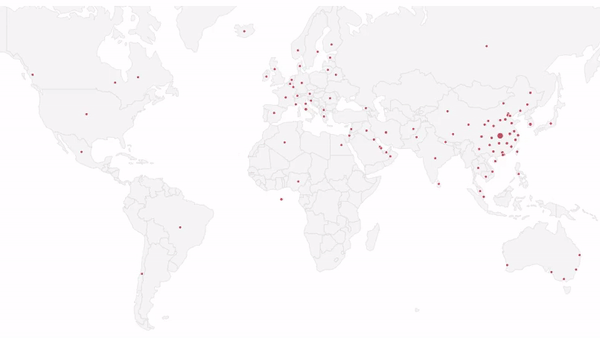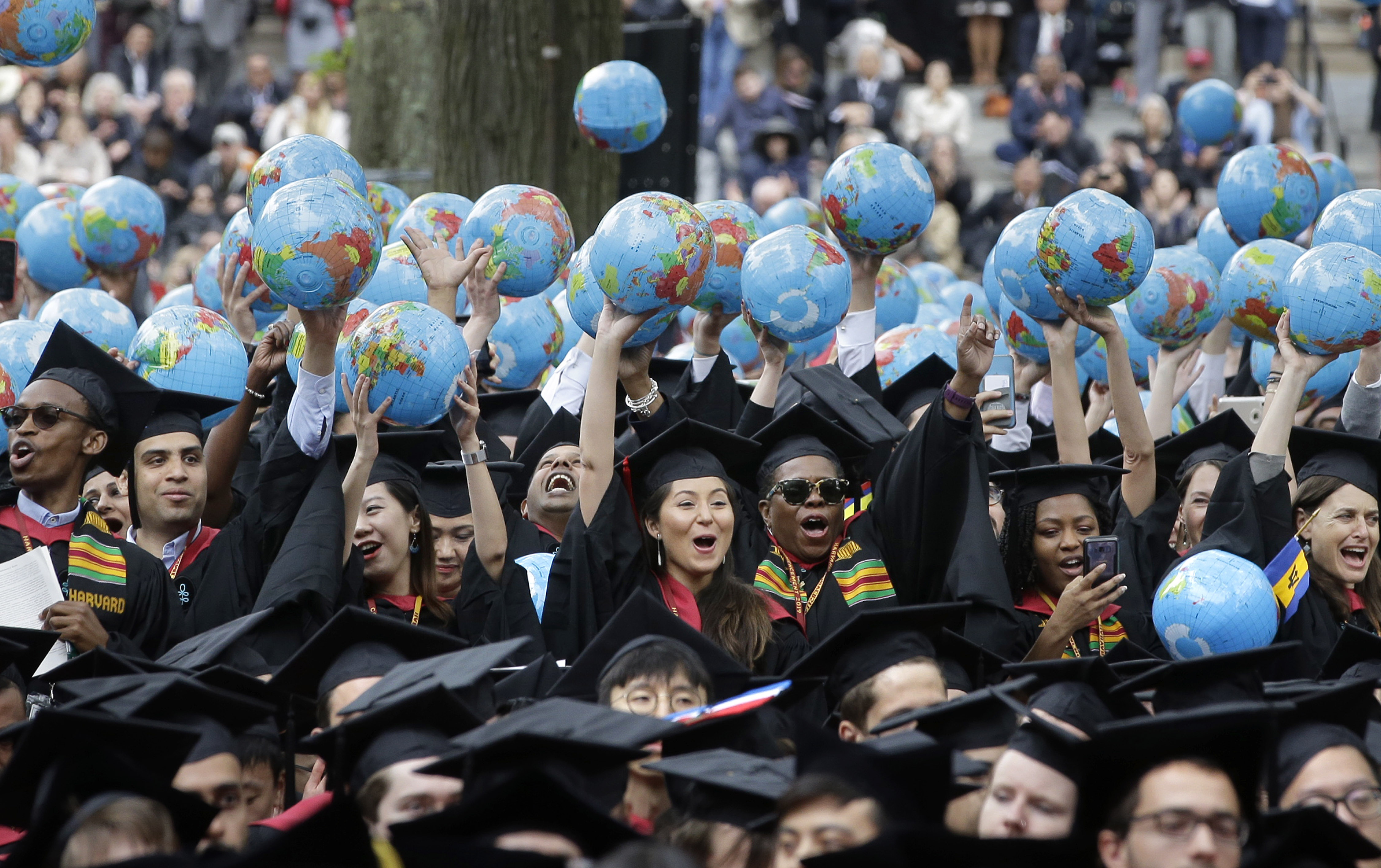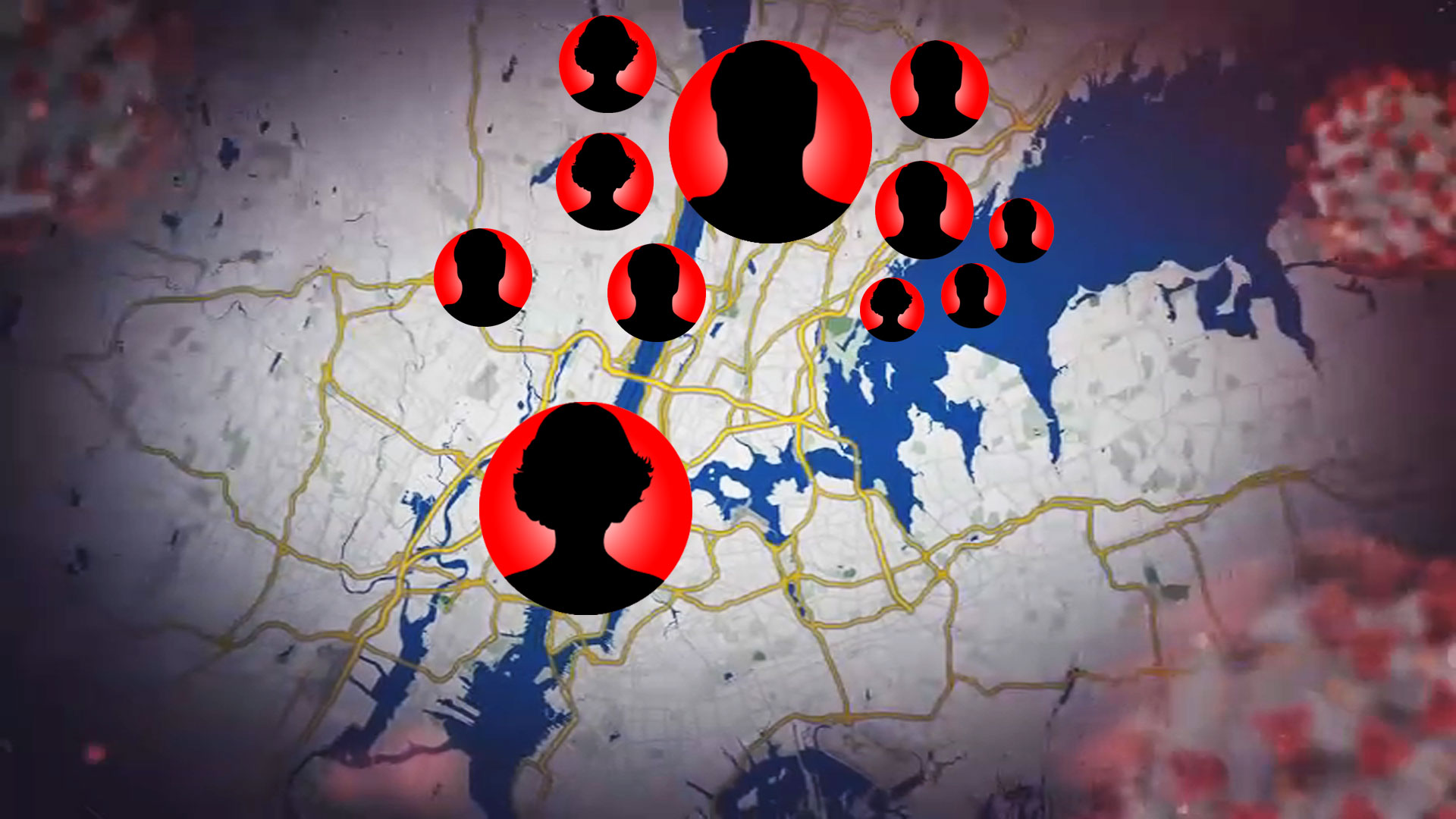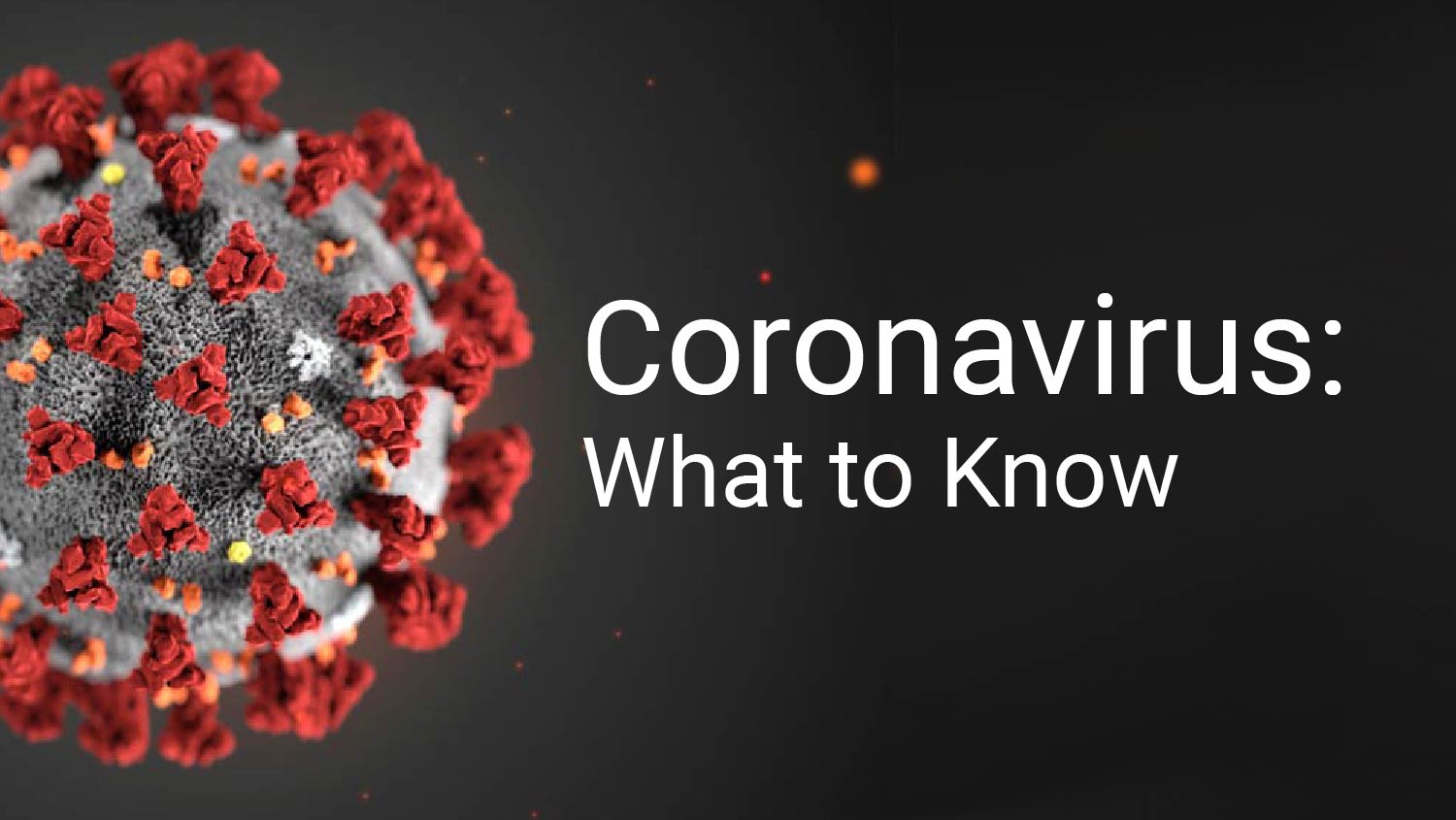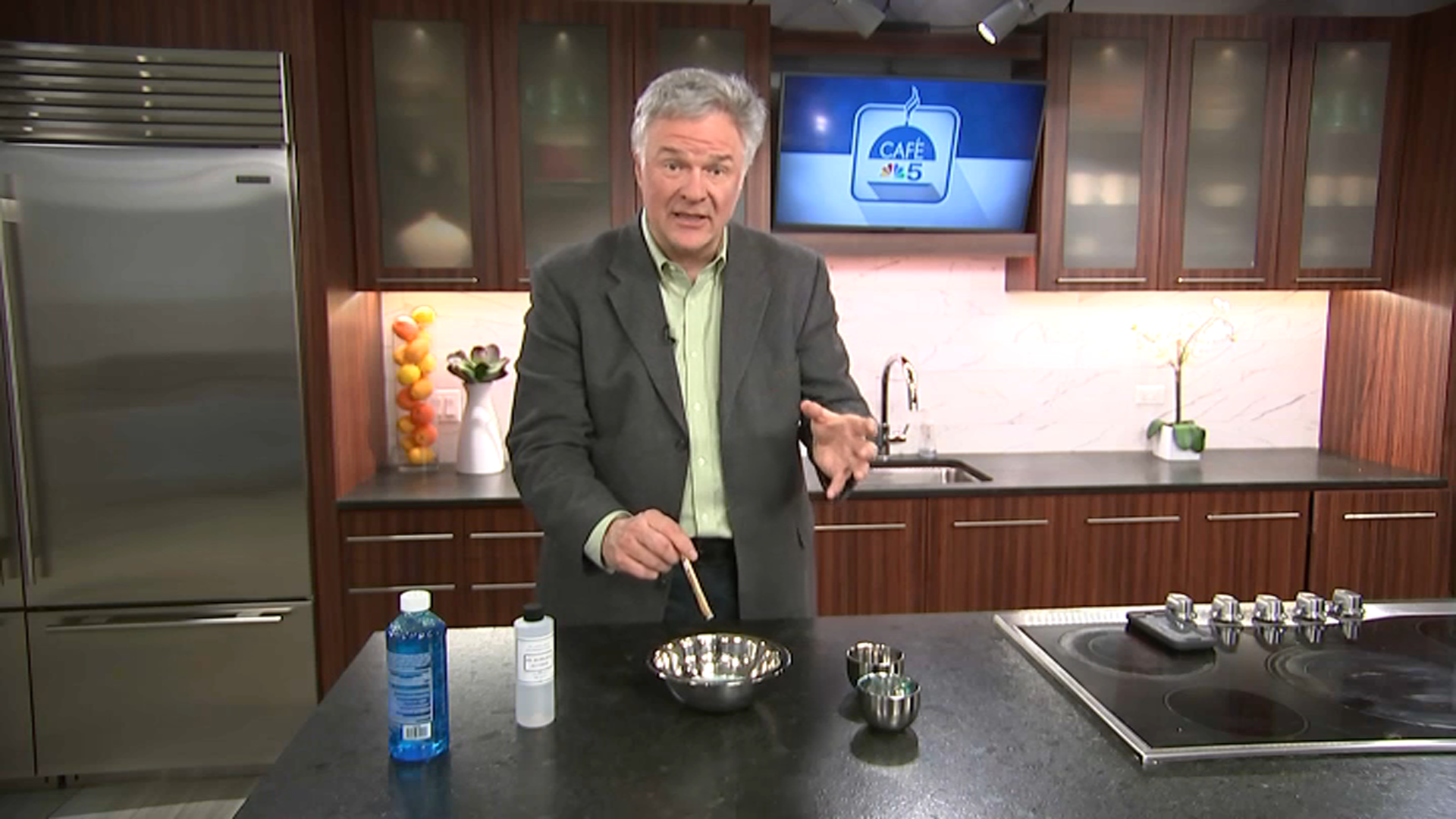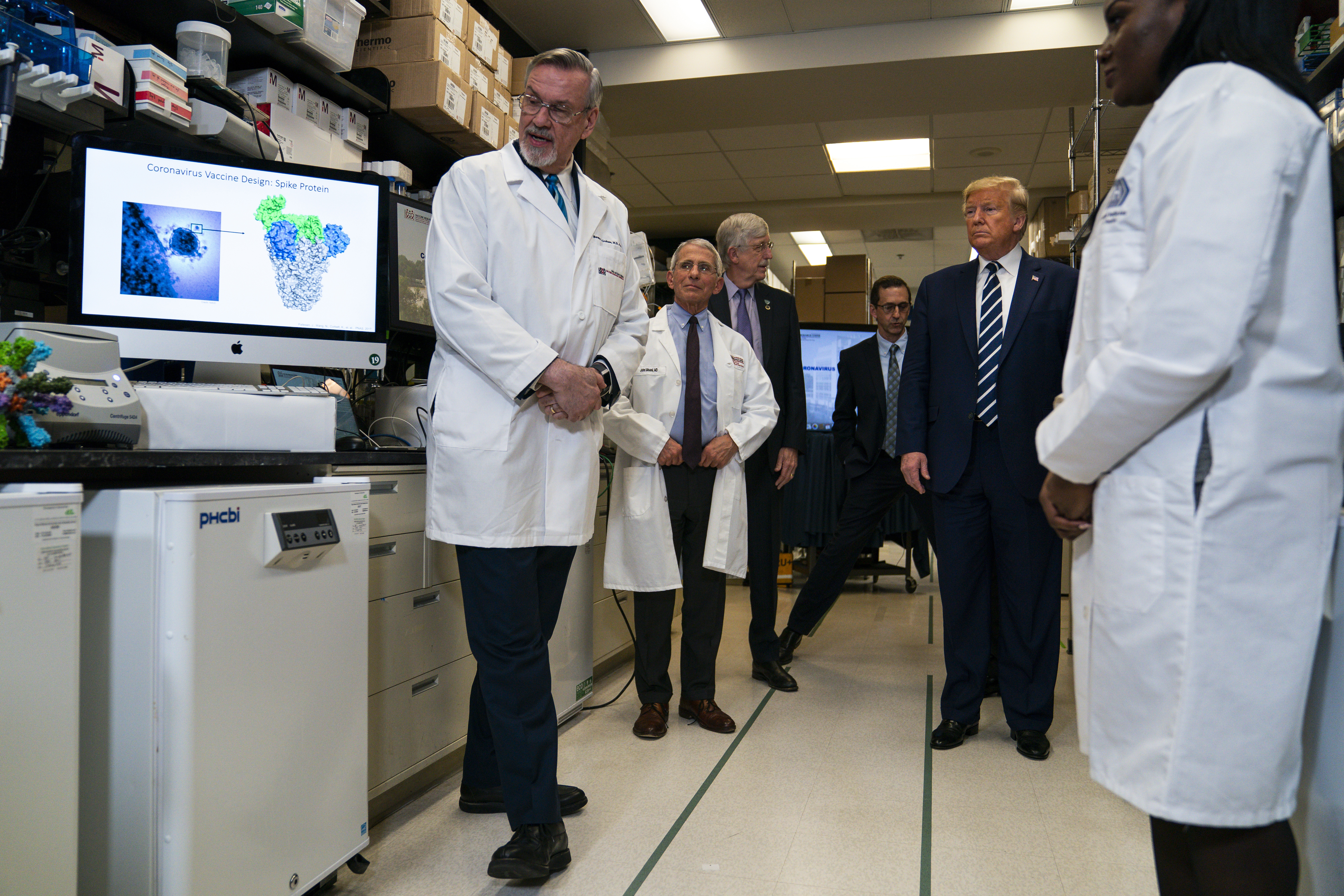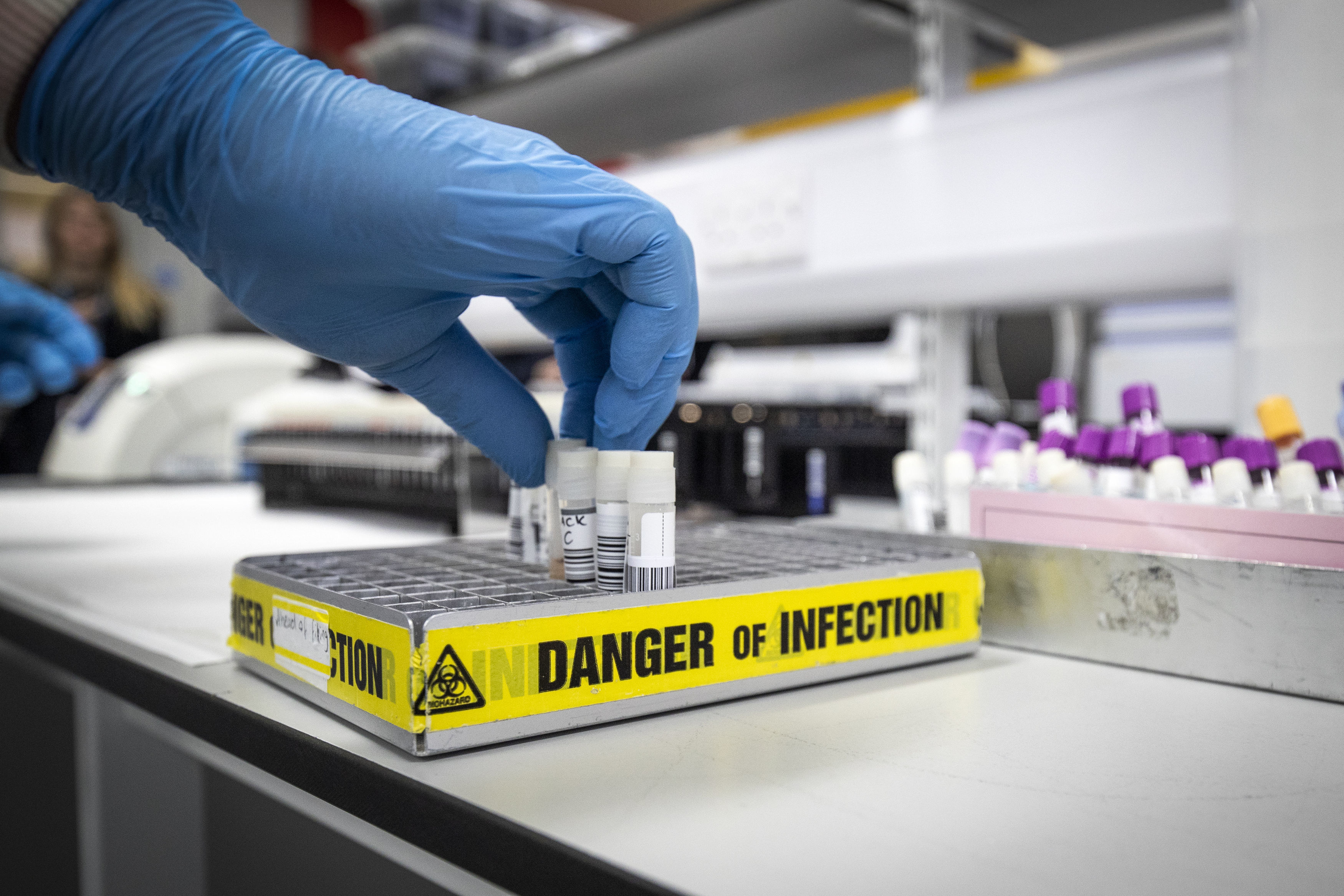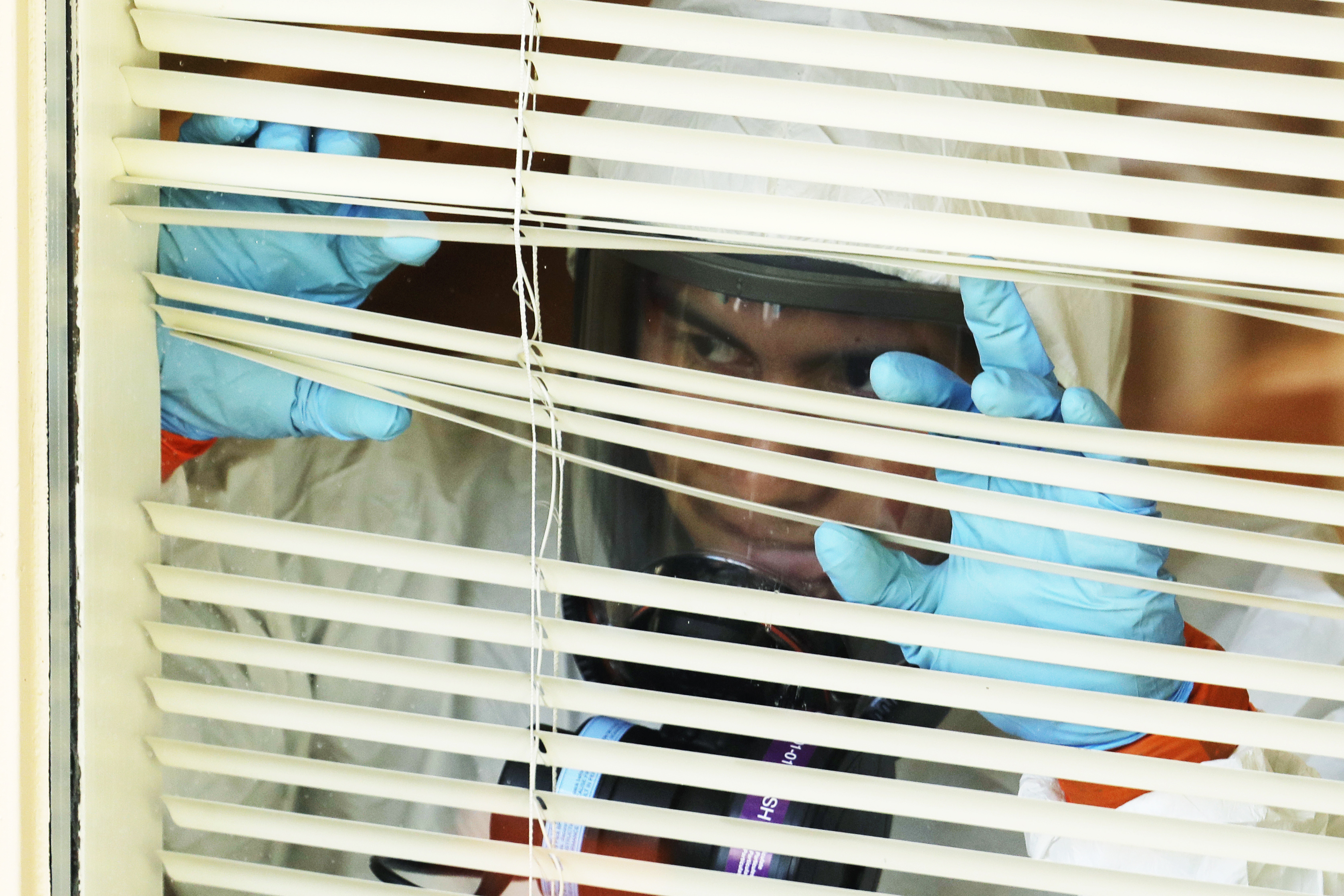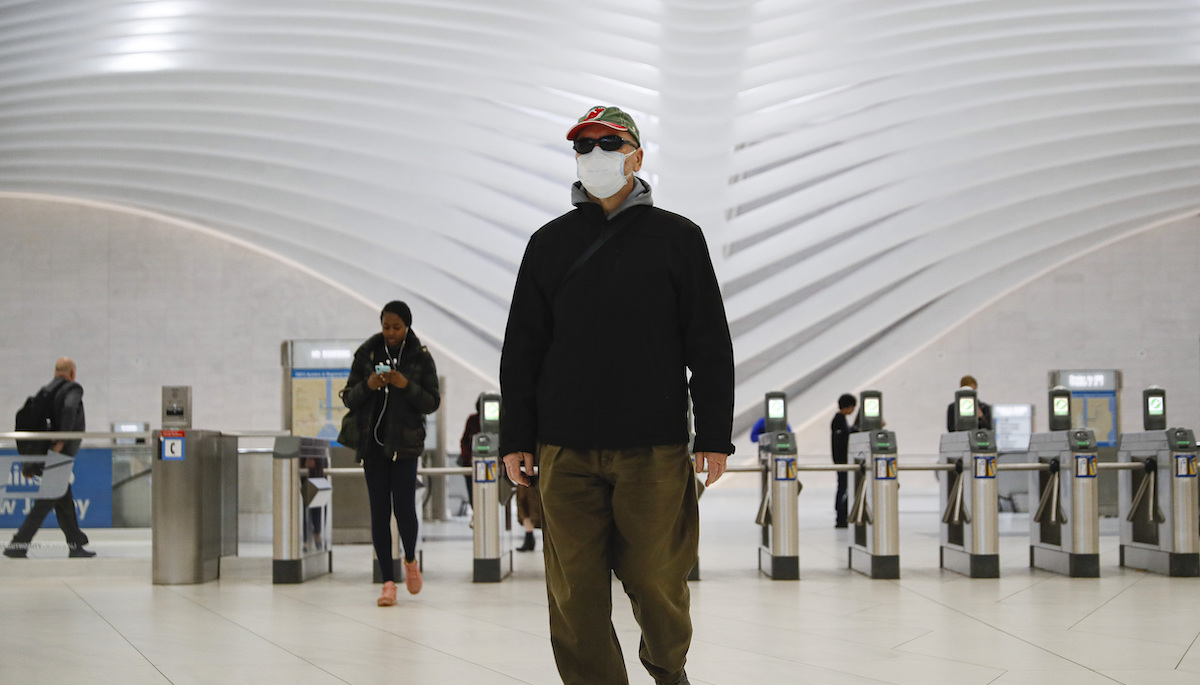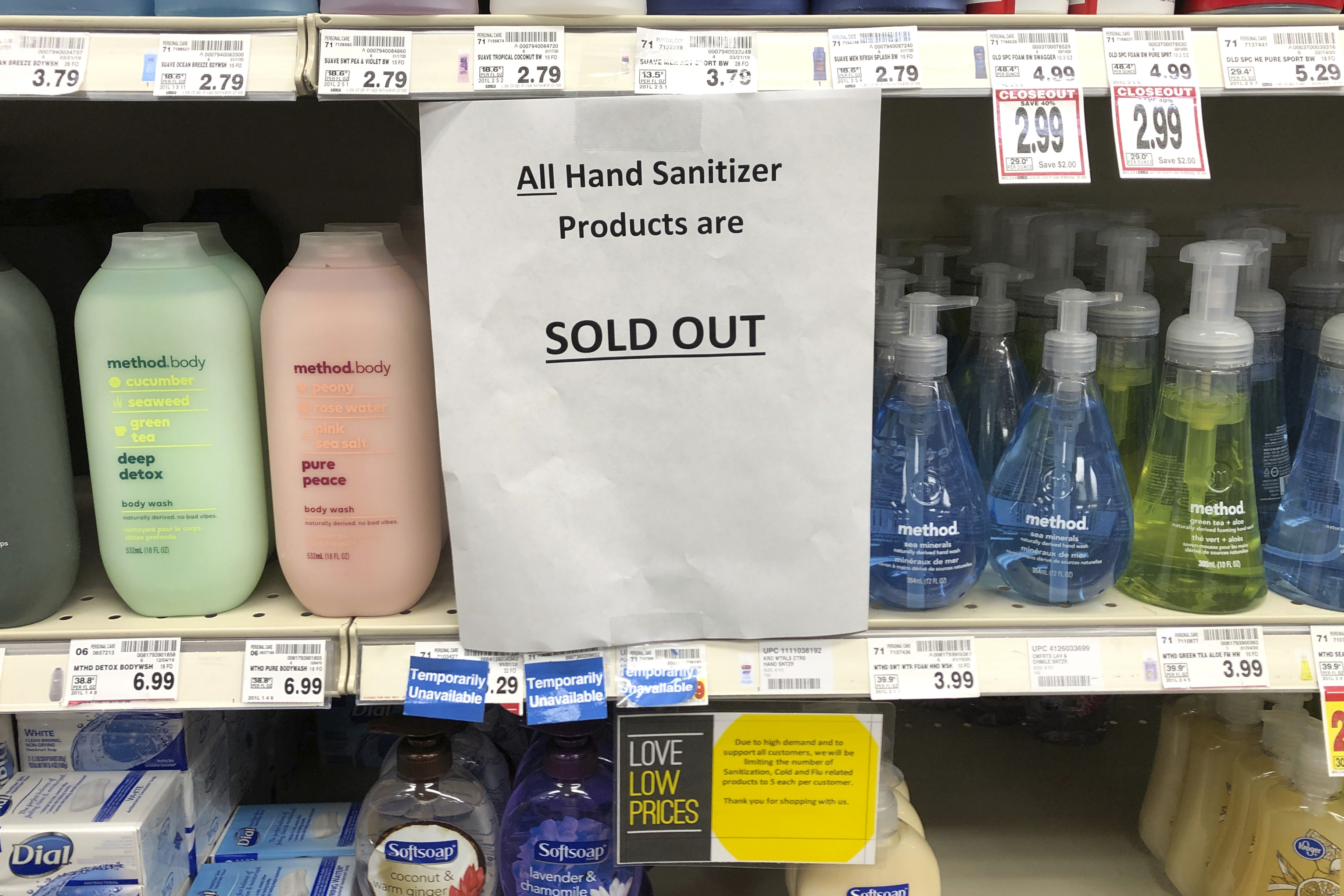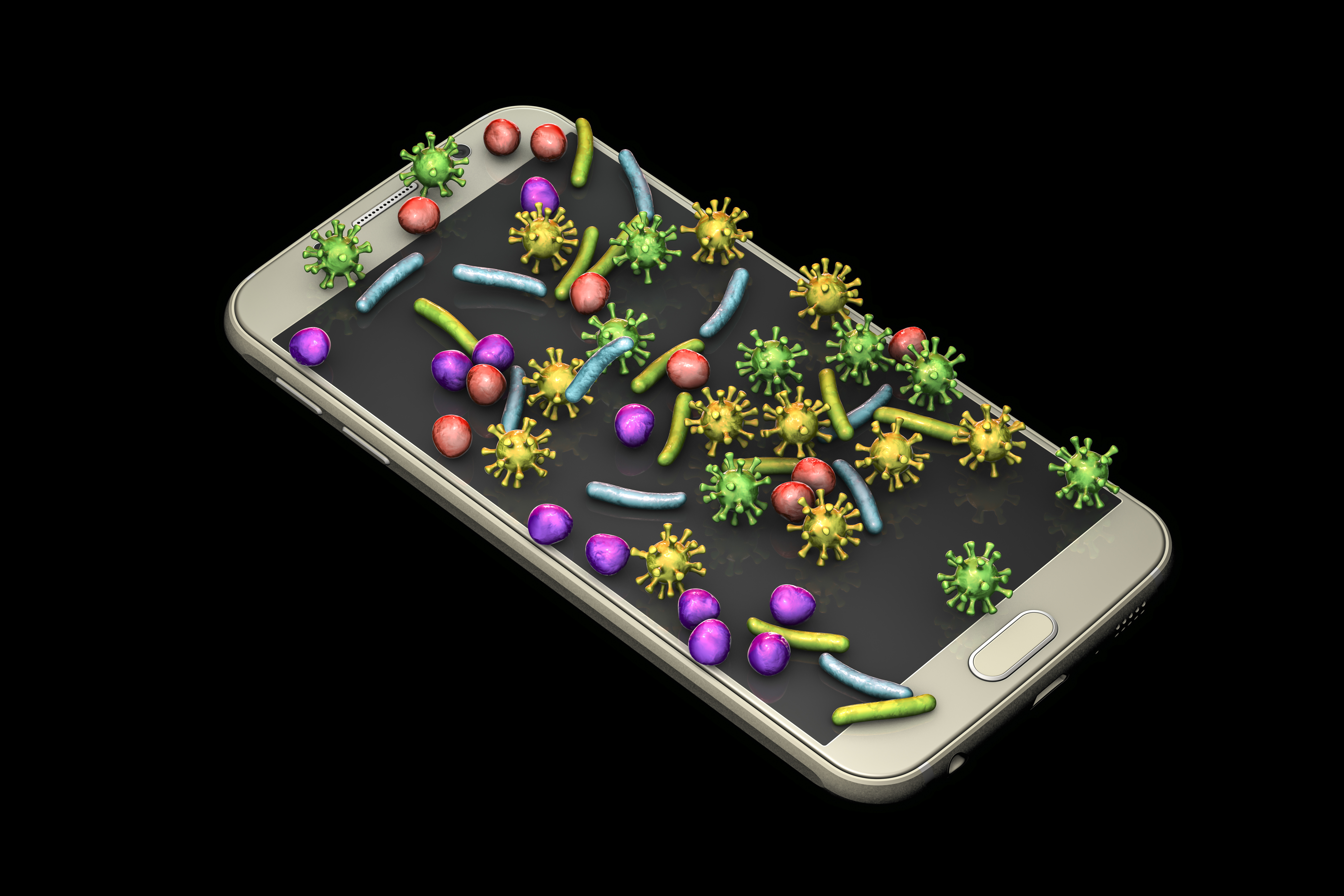What to Know
- U.S. coronavirus cases have surpassed 2,000; more than four dozen people have died, including two people in New Jersey and two people in New York
- The state of New York has more than 700 cases; most of the cases are in NYC and Westchester
- Governors in New York and New Jersey have declared states of emergency, and the usage of public transit is plunging
Two people died from coronavirus-related deaths in New York - the state's first reported deaths - and a second people died in New Jersey, the governors from both states announced Saturday.
A woman in her 50s died in Monmouth County, Governor Phil Murphy tweeted Saturday night. It was not immediately clear if the woman had any previous or underlying health conditions that may have contributed to her death.
Earlier in the day, New York state officials announced the state's first deaths: a 64-year-old Rockland County man and an 82-year-old woman from New York City.
The New York City woman was hospitalized in Brooklyn on March 3 after contracting the novel coronavirus "on top of the emphysema," Cuomo said during a teleconference Saturday. The case marked the first death of a person in New York State "who had the coronavirus with the underlying symptoms," he said.
Fewer details were immediately released about the death of the Rockland County individual. The medical examiner confirmed the death was within the Village of Suffern on and tested positive for COVID-19. A source familiar with the case told News 4 that the victim died at their home in the Village of Suffern on Saturday and had not been previously tested for the coronavirus.
"The decedent was 64 years old and had other significant health problems which were likely contributory to death," a statement from the medical examiner said.
The number of positive cases in the state also increased to 613 by Saturday evening, Cuomo said. 269 of the 613 cases are in New York City; 178 are in Westchester County; 79 are in Nassau County; 41 are in Suffolk County; 12 are in Rockland County; 6 are in Orange County; 5 are in Albany County; 4 are in Dutchess County; 3 are in Erie County. A complete breakdown of the numbers can be found here.
Tioga, Tompkins, and Erie counties each saw their first confirmed positive cases, Cuomo said.
"The more tests we take, the more that number will go up," Cuomo noted. "We believe there are thousands of people who have coronavirus [in the state]. Maybe tens of thousands."
Cuomo on Saturday also encouraged New Yorkers to seek health advice remotely, saying the state would waive copayments for insurers “for any telemedicine visits.”
At a press conference on Saturday afternoon, meanwhile, Vice President Mike Pence announced the U.S. would expand its travel ban to include the United Kingdom and Ireland.
Mayor Bill de Blasio on Saturday noted that the 82-year-old woman who died had been in critical condition since she was admitted to Wyckoff Heights Medical Center in Brooklyn.
Amid a dramatic rise in cases across New York, two state lawmakers tested positive for the virus, Gov. Cuomo confirmed late Saturday.
"It has come to our attention that two of our Assembly colleagues - Helene Weinstein and Charles Barron - have been diagnosed with COVID-19," the governor said. He also noted that neither had been to the Capitol since early March, but out of an abundance of caution it would be closed to visitors on Sunday.
Among the cases yet to be confirmed, that of a New York City school safety agent. Three senior city officials told News 4 the woman tested positive for COVID-19, which she contracted her husband, a taxi driver.
Officials from her union said she hasn't been in the Queens elementary school since March 4. Pending official confirmation, the school would be required to close for a 24-period to clean as a precaution.
Thirty people in New York City were hospitalized due to the novel coronavirus as of Saturday afternoon, 19 of whom were in intensive care, de Blasio noted. Eighty percent of those hospitalized were over 50 years old and/or have pre-existing conditions, he said. One of the new confirmed cases is an FDNY member who works at a firehouse in Brooklyn; 31 members of the firehouse have been quarantined "as a matter of precaution," de Blasio said.
Gov. Phil Murphy also announced an increase in the number of positive tests in New Jersey on Saturday afternoon, saying that 19 new cases since Friday had brought the state's total to 69.
After dealing with seemingly nothing but bad news for the past couple of days — including even more COVID-19 cases, New York State and New York City declaring states of emergency, Broadway going dark, the sports world entirely put on hold, and a national emergency being declared — there was a bit of good news Friday.
In a time when bipartisan bills can be very tough to come by, President Donald Trump cheered for the House's passing of the Families First Coronavirus Response Act, which calls for free testing, two weeks of sick pay for workers, enhanced unemployment benefits and bolstered food programs.
While that won't exactly make up for New York City almost becoming a "ghost town," it may help some people, especially those who have been worrying about taking off work either for themselves or for their children, many of whom in the tri-state have had classes canceled for extended periods.
However, there are almost guaranteed to be more sobering numbers regarding coronavirus cases coming out in the coming week, as officials expect more to keep coming all over the tri-state — and could expect to see increases for months. On Saturday, Cuomo said New York is now among the hardest-hit states in the country, with 613 cases of COVID-19 — including more than 200 in New York City.
Coronavirus Impacts
There were at least 35 COVID-19 cases in Manhattan, 26 in Queens, 24 in Brooklyn, 13 in the Bronx and five on Staten Island. One of the Staten Island cases involved a special education student from the Richard Hungerford School at New Dorp High School. That school was closed Friday and will be cleaned over the weekend, with the hopes of reopening on Monday.
A teacher at the Brooklyn Occupational Training center also self-reported having the virus, which tests later confirmed. Officials have since closed the school, and because there are medically fragile students who attend, is was not known when the school would be cleared to reopen.
"This is going to be everywhere," Cuomo said. "My guess is there are thousands and thousands of cases walking around the state of New York."
Meanwhile, Murphy said it was an "inevitability" that all schools in the state would close, and he raised the prospect of taking the recommended 250-person limit on gatherings and making it mandatory.
President Trump's national emergency declaration freed up another $50 billion for more relief efforts. He also enlisted some of the nation's largest retailers, including Walmart and Target, to host drive-thru testing in their parking lots.
In New York City, Mayor Bill de Blasio doubled down on his decision to keep the city's public schools open, saying he fears the "unintended consequences" of what could happen should they close their doors.
"I understand the anxieties right now. My strong belief is schools weren't open, children would go all over looking for something to do ... no pristine quarantine," de Blasio said, adding that parents he talked to agreed that without school, kids would go hang out with their friends and go anywhere — thereby defeating the purpose of any quarantine-like scenario.
"I think there is an illusion you can shut down schools temporarily. If you shut down, you have to be ready that that's it for the school year — that could be it for the calendar year," he said.
Despite some private schools and universities closing around the city, as well as calls online to #CloseNYCSchools, the mayor said that they are going to try their "damnedest" to keep New York City schools open as long as possible. Many have asked why, particularly when large-scale venues are shutting down to try to reduce density in any one space at one time.
“The danger of going to a full shutdown is it will degrade not only people's lives on a host of matters, including their health and safety and other ways,” de Blasio said. Some people have to work, the mayor added, noting, "That includes a lot of parents we depend on, first responders, health care professionals -- it’s a very slippery slope.”
Attendance in city schools did take a significant dip on Friday, with schools reporting just 68 percent of students attending on Friday — down from above 80 percent Thursday. There was also a slight uptick in teacher absenteeism Friday, according to a city official.
"I think there's a shock right now, the last few days have been a shock to the system," the mayor said. "I want to see where things are in a week or two weeks."
Parents who do opt to hold their children out of school as a precaution, though, should know that their kids will not be penalized for being absent. even with more students not attending school, the mayor said there was no "hard and fast" threshold set for when he would consider closing schools.
Get full details on those closures and other school impacts across the tri-state here.
Coronavirus Impacts
De Blasio signed a state of emergency declaration for the city on Thursday, cautioning the surge in positive tests is far from over and projecting the five boroughs could see 1,000 cases by next week. Just Friday morning, a member of the New York City Council, Bronx councilman Fernando Cabrera, posted on Facebook that his son has caught the virus -- and warned members of their church, where the elder Cabrera is pastor, to take precautions.
The surge in cases has already triggered huge public anxiety despite authorities' best efforts to make the health facts clear: Eighty percent of people who get COVID-19 self-resolve without medical treatment; the vast majority of city- and state-run tests have been negative and the overall risk to the general public is low. That said, the spread must be contained -- primarily to protect the most vulnerable populations like the sick or elderly.
To further those efforts, Cuomo opened a drive-thru testing center in crisis epicenter New Rochelle on Friday, a six-lane facility that can test the occupants of up to 200 cars per day.
Those who want to arrange testing at the New Rochelle facility can call 888-364-3065
"We do have a crisis in testing. We're not up to scale," Cuomo said.
He enacted sweeping directives earlier Thursday, banning crowds of 500 people or more and darkening Broadway. How long will it all last? De Blasio said large venues, including Madison Square Garden and Barclays Center, could be shuttered through as late as September. Broadway is scheduled to reopen next month.
"The prism I'm looking at this from is: this is war," the mayor said.
The situation is highly fluid, though, and de Blasio said "every scenario" is regularly being evaluated.
Tracking Coronavirus in Tri-State
The mayor also repeated his call on Friday that more facemasks were needed for the city, in order to supply first repsonders and those could be treating infected patients, especially hospital workers. He said that the city has just over 500,000 masks, but they want 2.2 million more
What could come next? De Blasio detailed which measures could be taken by the city in order to help contain the outbreak as authorized by the city's state of emergency. While he made it clear that none of these measures have been activated, the order enables him to issue directives including:
- Enacting a city-wide curfew
- Controlling which vehicles can enter and leave parts of city
- Closing down public transportation
- Ordering hospitals to postpone elective surgeries
- Putting rations on certain supplies
- Suspending sales of alcohol, firearms and other items
- Prohibiting or restricting number of people on streets and public places
- Regulating or closing public spaces
- Enacting emergency shelters
- Limiting maximum building occupancies
Any decision to halt MTA service would come from Cuomo in concert with medical professionals, the agency's chairman said on "Good Day New York."
In the meantime, "Mass transit is not shutting down. The system is safe," MTA Chairman Pat Foye said.
The MTA said Friday that Long Island Rail Road ridership is down 31 percent, Metro North ridership is off 48 percent, subway traffic is down 19 percent and bus usage is down 15 percent.
Coping With the Outbreak
Meanwhile, New Jersey now has at least 69 cases and Connecticut has 14 presumed positives, most of which were in Fairfield County. See a tri-state case breakdown here.
Nearly half of the state's cases are in Westchester County, where the midtown Manhattan lawyer linked to what Cuomo has called "the most significant cluster" in the nation lives with his family in New Rochelle. He is one of the relatively few COVID-19 patients to still be hospitalized.
Latest Guidance and What's Next
The CDC said this week it would send more than half a billion dollars to state and local jurisdictions for COVID-19 response, but both Cuomo and de Blasio have slammed the federal government for what they have described essentially as a "too little, too late" — and woefully slow — response.
Cuomo described the government lack of testing as the "public health version of Hurricane Katrina." Vice President Mike Pence acknowledged testing has been an issue since the start of the outbreak, but said every state now has testing capability at state labs, and that the U.S. is working to expand number and access to coronavirus tests in all 50 states, also via commercial and private labs like Labcorp and Quest.
In an effort to control the spread of the virus, the Department of Homeland Security on Friday put out a list of airports that U.S. citizens, legal residents and their immediate families are required to travel through to re-enter the country if they are coming from certain European countries, China and Iran. Of the 13 airports listed, New York CIty's JFK Airport and New Jersey's Newark Airport were both listed.
Local governments are also implementing changes — some major, some minor — that may impact the daily lives of people who will never get COVID-19. Here's a breakdown of what's happening in that regard by state.
Latest Coronavirus News
How to Protect Yourself
New York City's Health Department released the following guidance for people who recently traveled to China, Iran, Italy, Japan or South Korea -- or for anyone who experiences fever, cough or shortness of breath:
- Stay home — do not travel or go to work or school while sick
- Go to a health care provider and tell them about your travel history
- If you do not have a health care provider or insurance, call 311
- Avoid contact with others
- Wash hands often with soap and water for at least 20 seconds. Use an alcohol-based hand sanitizer if soap and water are not available
- Avoid touching your face with unwashed hands
The New Jersey State Department of Health has established a 24-hour coronavirus hotline to answer questions: 800-222-1222. New York has a similar hotline set up: 888-364-3065.
What to Know
As of late Friday morning, NBC News reported more than 2,300 cases and 51 deaths nationwide; 37 of the fatalities have been in Washington state, where America's very first case was reported.
In more than 1,300 of those cases, authorities still don't know how the virus was contracted. That total number is only updated once a weekday though and reporting closes out at 4 p.m. the day before. The actual case total could be higher.
Quick Tips to Help Keep You Safe
Help may be on the way. President Trump has signed an $8.3 billion measure to fuel national efforts to combat the spread. The legislation provides sustenance for a multifaceted attack -- money for vaccines, tests, potential treatments and to help local governments respond to the virus.
Worldwide, the virus has infected more than 132,000 people and killed more than 5,000, according to the World Health Organization. CDC officials warned for weeks to expect a disruptive spread of the virus in America. Here's where we stand now as far as developing a vaccine. On Wednesday, the World Health Organization said it had made the assessment that COVID-19 could be characterized as a "pandemic."

